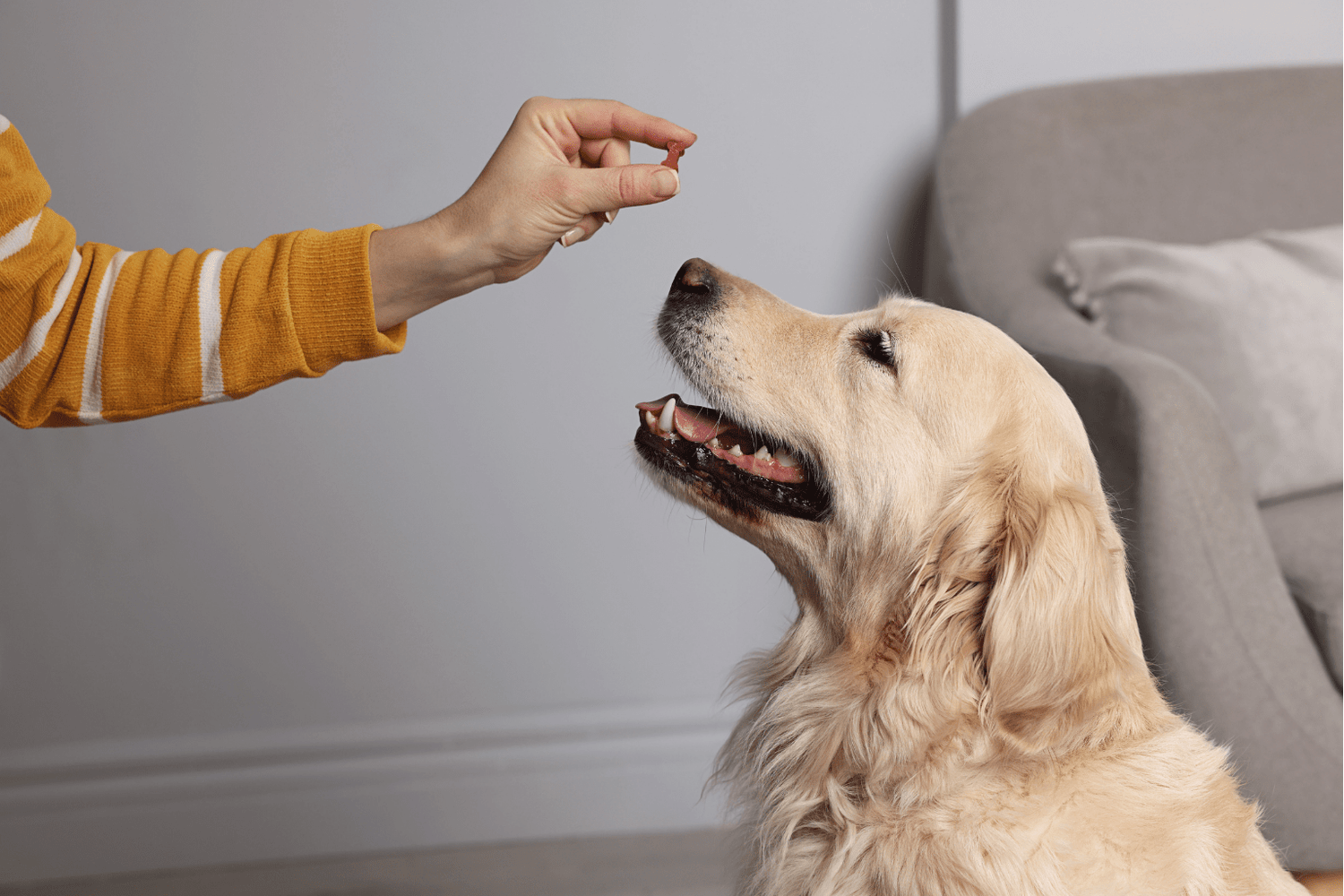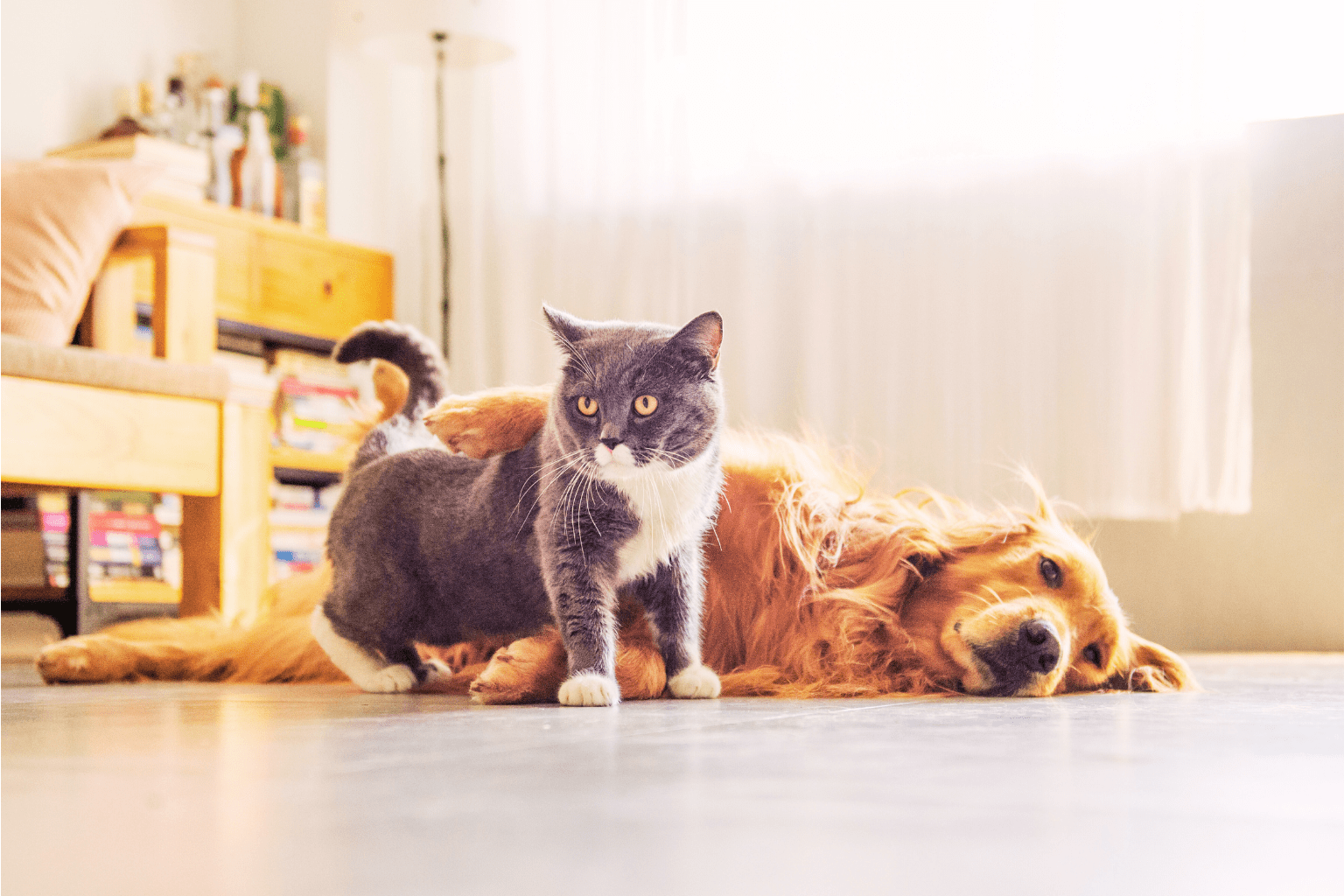Key Takeaways
- Many dogs skillfully avoid taking pills even when hidden in their favorite foods.
- It is a common challenge faced by pet owners trying to medicate their dogs.
- Careful observation is needed to ensure the dog actually ingests the medication.
- Finding effective and gentle solutions is important for both the dog and owner.
Table of Contents
When Your Pup Says "Nope" to the Pill
Picture this: You've carefully wrapped Bella's joint support supplement in her favorite cheese, only to watch her expertly eat around it, leaving the pill sitting sadly on her tongue. Sound familiar? You're definitely not alone in this daily dance that countless pet parents know all too well.
When my Border Collie mix Tango started refusing his prescribed medications, even when I hid them in everything from peanut butter to his beloved chicken treats, I felt like I was failing him as his mom. The stress of missed doses, the worry about his comfort, and the frustration of watching him outsmart every trick in the book led me down a path that changed everything for both of us.
If your dog won't take pill even with food, you may want to explore gentle, natural solutions such as WALK-EASY® Advanced Joint Support for joint comfort, or consider Pet Relax Dog Calming Anxiety Relief if stress is making medication time even harder.
Why Dogs Refuse Pills, Even With Their Favorite Food

What's Really Going On?
Dogs experience pill refusal through behaviors that might seem almost human in their cleverness. They'll sniff suspiciously at their usual treats, delicately eat around hidden medications, or perform the classic "fake swallow" followed by a strategic spit-out when you're not looking.
The most common refusal behaviors include hiding under furniture when they see you preparing medication, dropping food from their mouth after initial acceptance, or simply walking away from food they'd normally devour in seconds. Some dogs become so skilled they can separate pills from even the stickiest treat combinations.
The Taste, Smell & Texture Problem
Your dog's sense of smell is roughly 10,000 to 100,000 times more sensitive than yours, which means they detect that bitter medication long before it reaches their taste buds. Most pharmaceutical pills contain compounds designed for human tolerance, not canine preferences, creating an immediate "danger" signal in your pup's mind.
The texture contrast also plays a role, that hard, foreign object hidden in soft food feels wrong to dogs who rely heavily on mouth-feel to determine food safety. Even when you think you've perfectly camouflaged a pill, your dog's sensory system has already identified the intruder.
Health & Emotional Triggers
Past negative experiences create lasting associations between pills and discomfort. If your dog previously felt nauseous, experienced stomach upset, or simply disliked the forced administration process, they'll remember and resist future attempts.
Current health issues can compound the problem, dogs with oral pain, nausea, or digestive sensitivity may refuse food entirely when they detect medication. Stress and anxiety during pill time also trigger fight-or-flight responses that make cooperation nearly impossible.
What's At Stake
Missed doses can significantly impact your dog's healing timeline and comfort level. Supplements need consistent administration to support the body's natural processes effectively, while prescribed medications require steady dosing to maintain relief for conditions like joint discomfort or post-surgical recovery.
What's the risk if a dose is missed? Single missed doses rarely cause emergencies, but inconsistent schedules can lead to breakthrough discomfort, incomplete support, or reduced effectiveness of wellness management.
Research shows that consistent dosing schedules support the body's natural healing processes by maintaining steady support levels, while sporadic dosing can actually slow recovery and reduce overall wellness success.
Prepping for Success, Before You Even Touch the Pill
Create Calm, Trusting Spaces
Choose a quiet area away from other pets, children, or household commotion. Your energy directly affects your dog's stress level, so take a deep breath and approach with confidence rather than anxiety about potential failure.
Use a calm, cheerful voice and relaxed body language, dogs pick up on tension in your shoulders, rushed movements, or frustrated sighs. Creating positive associations starts with your own mindset and energy.
Know Your Pup's Preferences
Observe which treats your dog finds irresistible versus merely acceptable. High-value options vary by individual, some dogs will do anything for freeze-dried liver, while others prefer cheese or plain cooked chicken.
Consider any dietary restrictions or sensitivities that might limit your options. Dogs on prescription diets, those with sensitive stomachs, or pups with food allergies need carefully selected pill-hiding foods that won't compromise their health condition. For more ideas on safe treat options, see what human food dogs can eat.
Vet-Approved Plan
Discuss pill-giving challenges openly with your veterinarian. They can often suggest alternative formulations, demonstrate proper techniques, or recommend specific foods that work well with your dog's particular medication.
Keep a simple pill log to track successful methods and timing. This documentation helps identify patterns and makes future dosing sessions more predictable for both you and your pup.
Hiding Pills Like a Pro, Best Foods, Treats, and Techniques
The art of pill concealment lies in understanding what motivates your dog's taste buds while keeping safety paramount. When your dog won't take pill even with food, the issue often stems from choosing the wrong hiding spot or using foods that amplify rather than mask the medication's presence.
Best Foods & Treats for Pill-Hiding
Successful pill hiding requires foods with strong flavors and soft textures that completely encase the medication. Xylitol-free peanut butter tops the list for its sticky consistency and irresistible taste, most dogs will swallow before detecting the hidden pill. Plain Greek yogurt (lactose-free varieties) works exceptionally well for dogs with sensitive stomachs, while canned pumpkin puree provides natural sweetness without added sugars.
Soft cheese cubes like mozzarella or cream cheese create perfect pill pockets, and cooked chicken breast can be hollowed out to hide larger medications. Commercial pill pockets offer convenience and consistent results, though homemade options often prove more cost-effective for multi-pet households. If your dog struggles with recurring digestive issues, you might also consider Dog Laxative & Constipation Relief for added support.
| Hiding Method | Best For | Texture Advantage | Cost Factor |
|---|---|---|---|
| Peanut Butter | Most dogs, sticky pills | Completely coats medication | Very affordable |
| Commercial Pill Pockets | Consistent results, convenience | Pre-formed, perfect size | Higher cost per dose |
| Soft Cheese | Picky eaters, small pills | Moldable, strong flavor | Moderate cost |
| Cooked Chicken | Large pills, protein-motivated dogs | Natural texture, high value | Preparation time required |
The Bribe & Bait-and-Switch Method
This proven technique leverages your dog's excitement and natural swallowing reflexes. Start by offering two identical treats without medication, let your dog see, smell, and anticipate the reward. Give the first treat normally, then immediately present the pill-containing treat while your dog is still chewing and expecting another reward.
The key lies in timing and consistency. Your dog should be in "treat mode" rather than "suspicious mode" when receiving the medicated portion. Keep your body language confident and movements fluid, any hesitation signals to your dog that something's different about this particular treat.
Wendy discovered this method worked perfectly for her joint support routine: "I'd give Bailey his morning training treats, then slip in the joint supplement treat right in the middle. He was so focused on the reward sequence that he never noticed the difference." If your dog is dealing with joint discomfort, you may want to explore WALK-EASY® Hip & Joint Pain Relief for easier mobility.
Pill-Hiding Mistakes to Avoid
Certain foods can actually amplify medication odors or create dangerous health interactions. Avoid high-fat options like bacon or sausage, which can trigger digestive upset in susceptible dogs. Foods with strong competing odors, like fish or liver, might seem logical but often make pills more detectable rather than less.
Never use chocolate, grapes, onions, or garlic as hiding agents, and always check that peanut butter contains no xylitol. Dogs with kidney issues should avoid high-sodium foods, while those with heart conditions need low-fat options. When in doubt, stick to plain, single-ingredient foods that you know your dog tolerates well. For more tips on avoiding common pitfalls, check out mistakes dog owners make.
Creative Methods for Outwitting Pill-Proof Dogs

Some dogs seem to possess supernatural pill-detection abilities, requiring more sophisticated approaches than simple food hiding. These advanced techniques work particularly well for dogs who've developed negative associations with medication time or those who've learned to identify every concealment method in your arsenal.
Trick & Treat, Use Fun, Fast Games
Positive reinforcement transforms pill time from medical procedure to playtime. Start by teaching your dog to catch treats mid-air, this natural swallowing reflex bypasses the careful inspection that happens with ground-level treat delivery. Practice with regular treats first, building excitement and anticipation around the catching game.
Once your dog eagerly anticipates the toss-and-catch routine, incorporate the medicated treat into a sequence of three throws. Toss a regular treat, then the pill treat, then another regular treat in rapid succession. The excitement and momentum prevent careful examination of individual treats.
Rachel uses this method successfully with her rescue pack: "I line up all the dogs and make it a group activity. They're so focused on their turn and watching the other dogs that nobody notices which treat contains medication. It's become their favorite morning routine." For more ideas on keeping senior dogs engaged and happy, see fun things to do with senior dogs.
Distraction & Camouflage
Environmental camouflage proves just as important as food camouflage. Prepare pills away from your dog's view, many pets learn to associate specific sounds (pill bottles rattling, food containers opening) with impending medication time. Change your routine location, if you usually dose in the kitchen, try the living room or backyard instead.
The timing sweet spot often lies in capitalizing on your dog's natural excitement. Right before dinner, after a satisfying walk, or during their favorite playtime creates positive momentum that carries through pill administration.
For dogs who are especially sensitive or anxious, you may find success with Pet Relax Dog Calming Anxiety Relief to help reduce stress during medication time. If your dog is struggling with allergies or immune issues that make pill time even more challenging, consider Dog Allergy Relief & Immune Support for gentle, natural support.
Recent studies have shown that consistent routines and positive reinforcement can significantly improve medication compliance in dogs. For more on the science behind canine medication acceptance, see this external resource.
Additionally, you can explore a wide range of natural dog supplements & remedies for common dog health problems to support your pup's overall well-being and make medication time less stressful.
If you're interested in the latest veterinary research on medication administration in pets, check out this external study for more insights.
Not a substitute for professional veterinary advice.
Frequently Asked Questions
Why do dogs refuse to take pills even when the medication is hidden in their favorite foods?
Dogs have an incredibly sensitive sense of smell that can detect the bitter scent of medication long before they taste it. This, combined with the unusual texture of pills hidden in familiar foods, can trigger their natural caution, leading them to sniff out and avoid the medication even when it’s cleverly concealed.
What are some effective techniques or foods to successfully hide pills for dogs that are skilled at detecting medication?
Crushing pills into a small amount of strong-smelling wet food or using specially designed pill pocket treats can help mask the taste and texture. Offering soft, flavorful foods like cheese or peanut butter in small amounts can also encourage your dog to swallow the pill without noticing it’s there.
How can stress or past negative experiences affect a dog's willingness to take medication, and what can owners do to ease this process?
Stress and bad memories around medication time can make dogs anxious or resistant, turning pill time into a battle. Owners can help by creating a calm, positive environment, using gentle reassurance, and considering natural calming aids to reduce anxiety and make the experience less stressful for their pets.
What are the potential risks or consequences of missed medication doses in dogs, and why is consistent administration important?
Missing doses can reduce the effectiveness of treatment, potentially prolonging discomfort or delaying healing. Consistent administration supports your dog’s body in maintaining steady support and helps ensure the best possible outcome for their health and happiness.



